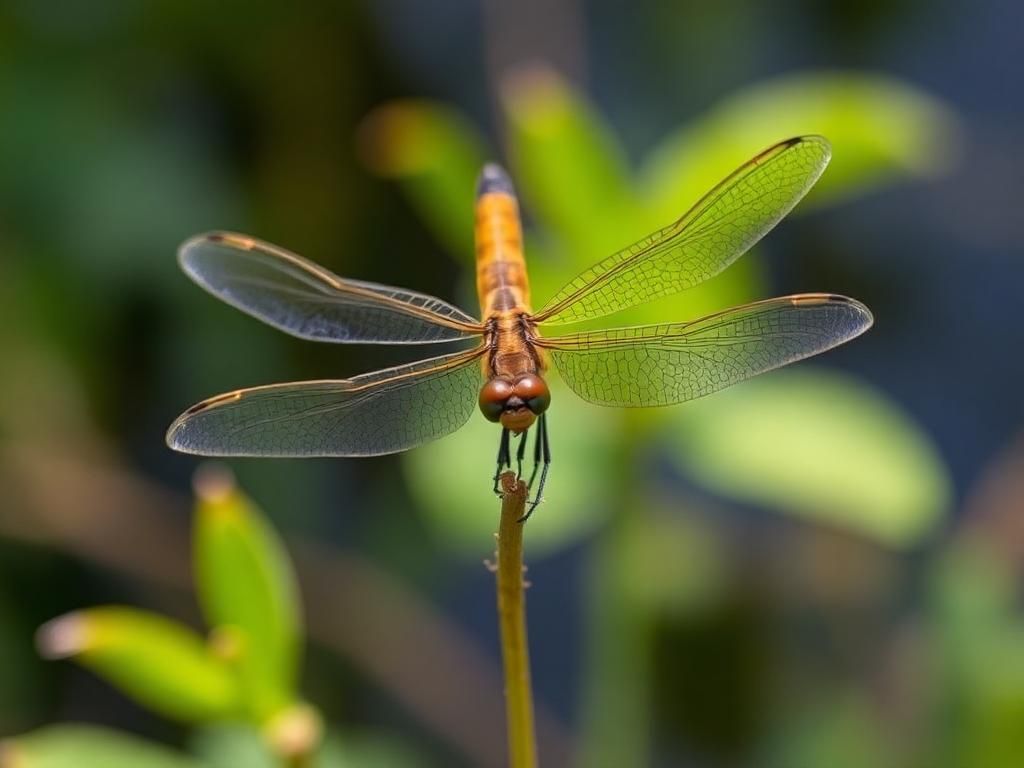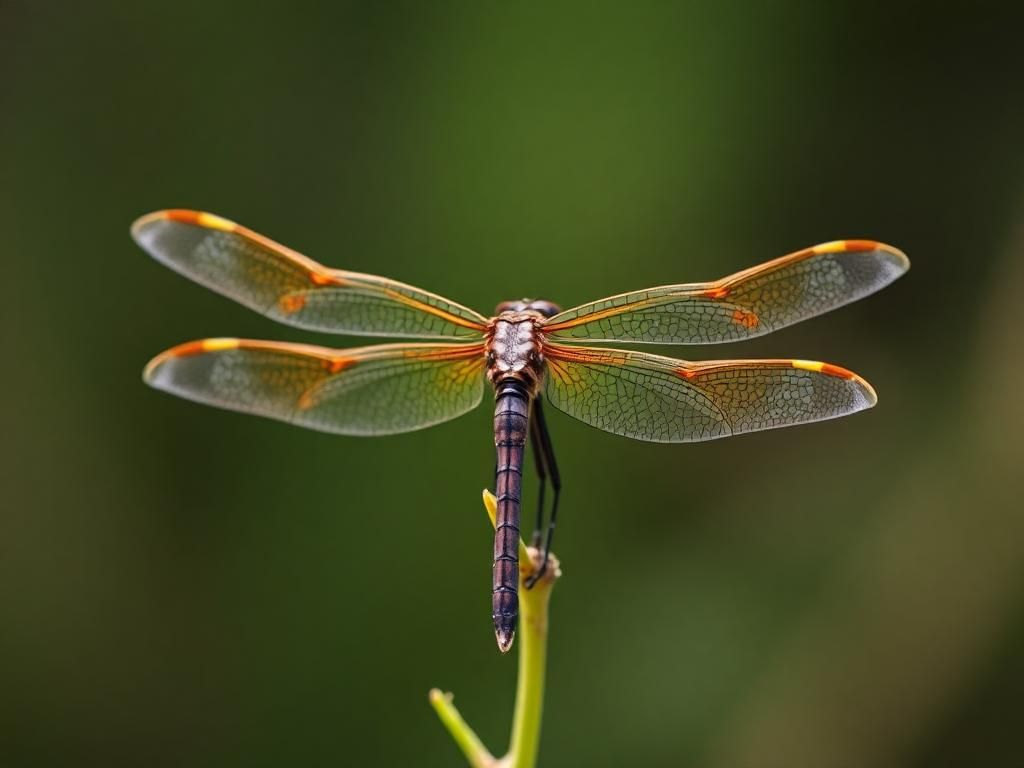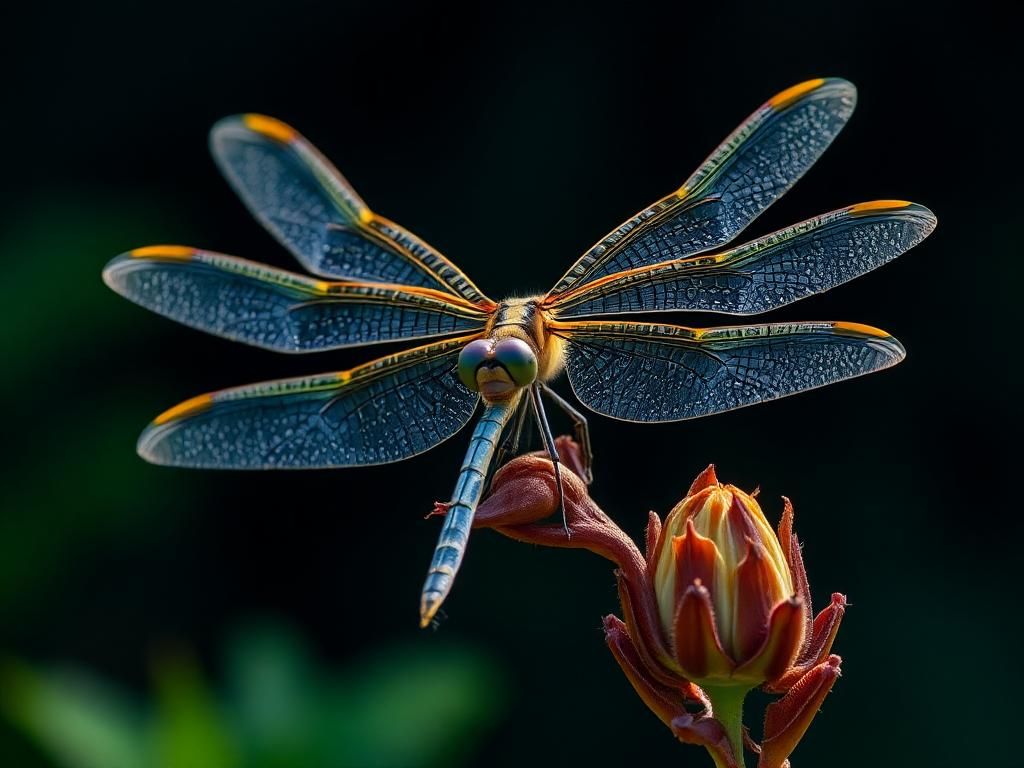The meaning of dragonflies transcends their delicate beauty and agility in flight. These fascinating insects are imbued with rich significance across various cultures and ecosystems. Understanding what dragonflies represent can offer insights into their ecological roles as well as their symbolisms in spirituality, mythology, and personal transformation. As we explore dragonflies’ importance through history, art, and nature, we uncover a profound connection between these creatures and various aspects of human life.
Introduction to Dragonflies
Dragonflies are remarkable insects known for their vibrant colors and impressive flying abilities. With their elongated bodies, large multifaceted eyes, and two pairs of wings that can move independently, dragonflies are not just visually captivating but also incredibly efficient predators. They inhabit a wide range of ecosystems, primarily near water bodies such as ponds, marshes, and streams.
These remarkable insects play a pivotal role in their habitats, acting as both predators of mosquitoes and indicators of healthy ecosystems. Their presence signifies a balanced environment, contributing to biodiversity and the maintenance of a functional ecosystem.
Cultural Significance of Dragonflies
Dragonflies in Different Cultures
Throughout history, dragonflies have held different meanings across various cultures, symbolizing strength, transformation, and happiness.
Japan: In Japanese culture, dragonflies symbolize courage and strength. They are often featured in art and literature, revered as symbols of resilience. The Japanese even celebrate the arrival of summer with dragonfly motifs in festivals and traditional crafts.
Native American Tribes: Many Native American tribes view dragonflies as spiritual messengers, embodying the essence of water and life cycles. They are believed to bring good fortune and symbolize swiftness and change, reflecting the connection between the natural world and spiritual realms.
China: In Chinese culture, dragonflies represent good luck and joy. Their intricate movements and vibrant colors evoke feelings of happiness and are often depicted in traditional artwork.
Dragonflies in Mythology
The symbolism of dragonflies extends into various mythologies, serving to illustrate concepts of change and transformation. Many cultures link dragonflies to metamorphosis, representing the journey of the soul and personal growth.
Dragonflies often appear as figures in many myths and legends, illustrating the transformative nature of life. In art and stories, they convey messages of hope, renewal, and the fleeting beauty of life. The iconic imagery of the dragonfly can serve as a reminder of the impermanence of existence and the potential for growth and change in human lives.
Symbolism of Dragonflies
Transformation and Change

One of the most significant aspects of what dragonflies represent is transformation and change. The dragonfly lifecycle consists of several distinct stages: egg, larva (nymph), and adult. This metamorphosis perfectly symbolizes personal growth and the transition through different life phases.
In many spiritual traditions, dragonflies are seen as a reminder to embrace personal growth and change. They encourage individuals to shed the old and welcome the new, symbolizing the emotional and spiritual transformations we all undergo.
Adaptability and Resilience
Dragonflies are remarkable for their adaptability. They thrive in a variety of environments, indicating their resilience and strength in overcoming challenges. This ability to adjust to ecological changes aligns closely with the need for humans to be adaptable in our lives.
The adaptability of dragonflies serves as a metaphor for human life, emphasizing the importance of resilience. In times of change, embracing adaptability can help us navigate difficulties and emerge stronger, just as dragonflies do in their natural habitats.
Lightness and Joy
Dragonflies are celebrated not just for their physical beauty but also for their lively behaviors. Their aerial acrobatics and agile flight patterns evoke a sense of lightness and joy. This aspect of their nature symbolizes an energetic and positive outlook on life.
In a world often characterized by stress and chaos, dragonflies serve as reminders to embrace the present moment and find joy in our surroundings. This connection to mindfulness encourages us to appreciate the beauty around us and cultivate a sense of gratitude.
Dragonflies in Literature and Art
Dragonflies have made appearances in literature and art throughout history, illustrating their significance in various themes and narratives.
Literature references: Many poets and writers have depicted dragonflies as symbols of fleeting beauty and transformation. For example, dragonflies often represent the delicate balance between life and death, reminding readers to appreciate the transience of existence.
Artistic representations: In the visual arts, dragonflies are often featured in paintings, textiles, and sculptures. Artists use dragonflies to symbolize themes of change, freedom, and the beauty of nature. Their intricate details and vibrant colors provide a rich medium for artistic expression.
Scientific Perspective on Dragonflies
Ecological Role

From a scientific perspective, the role of dragonflies in ecosystems is crucial. As predators of mosquitoes and other insects, they help control pest populations, contributing to a healthier balance within the ecosystem. As such, dragonflies are key indicators of environmental health; their presence reflects a thriving habitat.
Monitoring dragonfly populations can serve as an effective method for assessing ecosystem health and identifying areas needing conservation efforts.
Evolutionary Significance
The ancient lineage of dragonflies is noteworthy, as they have been around for over 300 million years. Fossil evidence reveals that some prehistoric dragonflies had wingspans of up to 30 inches, illustrating the evolutionary significance of these insects.
Understanding the evolutionary journey of dragonflies sheds light on concepts of biodiversity and conservation. Their long-standing presence in various habitats highlights the importance of preserving diverse ecosystems to maintain healthy populations of dragonflies and other species.
How to Attract and Observe Dragonflies
For nature enthusiasts, attracting and observing dragonflies can be a rewarding experience. Creating a dragonfly-friendly environment is essential for encouraging their presence in your backyard or garden.
Tips for creating a dragonfly-friendly environment:
– **Water features:** Installing ponds or small water gardens can help attract dragonflies, as they lay eggs in freshwater. Ensure the water is clean and vegetation surrounds the edges.
– **Native plant species:** Plant a variety of native plants that offer shelter and hunting grounds for dragonflies. Plants like aster, milkweed, and catmint create habitats conducive to insect life.
Best practices for observing dragonflies:
– Observe dragonflies during warm months when they are most active, particularly in the late afternoon when their hunting becomes more spirited.
– Use binoculars for a closer look without disturbing their natural behavior.
Conclusion
In exploring what dragonflies represent, it becomes evident that these enchanting insects symbolize various aspects of life, encompassing transformation, adaptability, and joy. By understanding their cultural significance and ecological roles, we can appreciate the depth of meaning attributed to dragonflies throughout history.
As we reflect on our journeys, let us embrace the symbolic lessons of dragonflies—strength in change, resilience in adversity, and the celebration of life’s moments. Furthermore, the conservation of dragonfly habitats is essential to ensure their ongoing presence and the health of our ecosystems.
Additional Resources
For those interested in delving deeper into dragonfly symbolism and ecology, consider the following resources:
– [The Dragonfly Society of the Americas](https://www.dragonflysociety Americas.org)
– [North American Dragonfly and Damselfly Conservation](https://www.northamericandragonflies.org)
FAQs About Dragonflies
- What do dragonflies eat? Dragonflies primarily feed on mosquitoes and other small flying insects.
- Are dragonflies harmful to humans? No, dragonflies are harmless and beneficial as they help control pest populations.
- How long do dragonflies live? Adult dragonflies typically live for about 4 to 6 weeks, though some can live several months.
- What time of day are dragonflies most active? Dragonflies are most active during warm, sunny days, particularly in the afternoon.
- Do dragonflies migrate? Some species of dragonflies do migrate, while others remain in the same area year-round.
- How can I identify different species of dragonflies? Identification can be done by observing wing patterns, colors, and body shapes, using field guides or apps.
- Are dragonflies found worldwide? Yes, dragonflies are distributed across the globe, found in diverse habitats.
- What is the lifecycle of a dragonfly? Dragonflies undergo a metamorphic lifecycle consisting of an egg, nymph, and adult stages.
- How can I help protect dragonflies? Supporting conservation efforts, creating suitable habitats, and avoiding pesticides can help protect dragonflies.
- Do dragonflies symbolize anything in dreams? Dragonflies in dreams can symbolize transformation and a reminder to embrace change.
Summary Table of Dragonfly Symbolism
| Symbol | Meaning | Cultural Reference |
|---|---|---|
| Transformation | Personal growth and change | Common in many cultures |
| Joy | Celebration of life’s happiness | Chinese culture |
| Resilience | Strength in adversity | Native American beliefs |
| Transformation | Connection to the soul’s journey | Various mythologies |
By embracing the wisdom encapsulated in dragonflies’ symbolism, we can cultivate a deeper appreciation for their roles in our lives and the environment.
